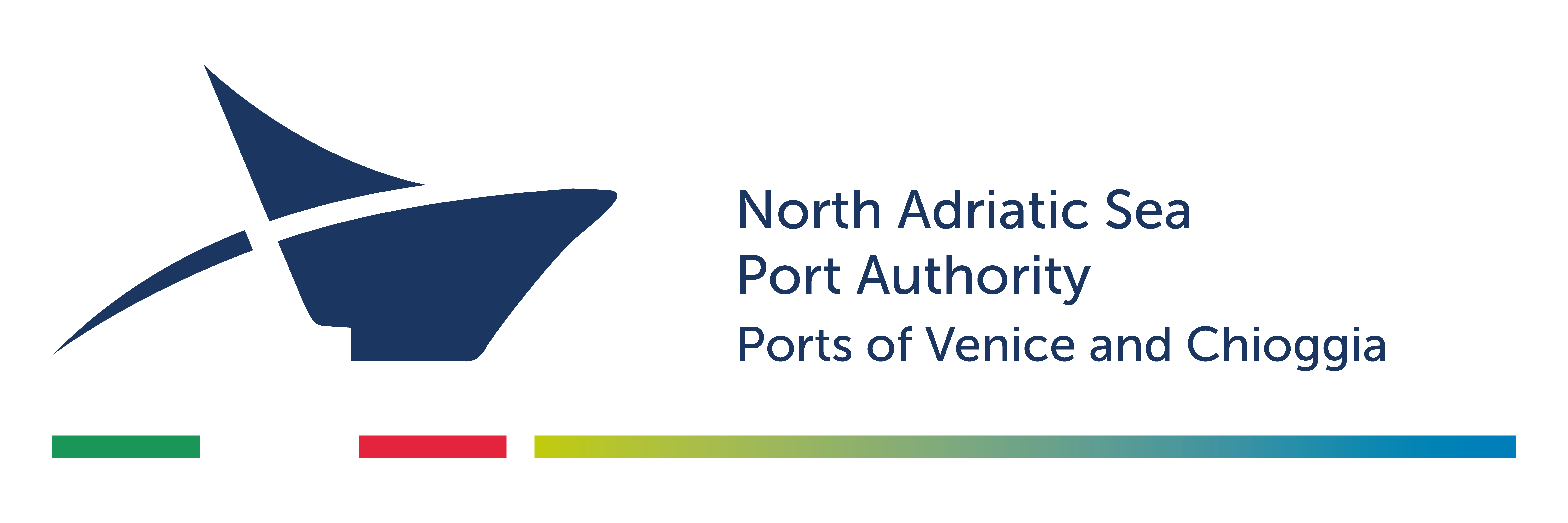According to the Port Reform Law 84/1994 and its subsequent amendments and integrations, including Legislative Decree No. 169/2016 of August 4, 2016, and Legislative Decree No. 232/2017 of December 31, 2017, known as the “Port Corrections,” the Port Regulatory Plan becomes the planning instrument for the system of ports within the port areas of the Port System Authority.
The Plan consists of a System Strategic Planning Document (DPSS) and the Port Regulatory Plans for each port.
Current Plans
The current Port Regulatory Plan for the Port of Venice (hereinafter referred to as PRP) dates back to 1965 for the Porto Marghera area and to 1908 for the relevant areas in the historic center of Venice and the municipality of Cavallino Treporti.

Port Regulatory Plan of Porto Marghera – 1965
Below are the site plans in PDF format.
The access routes from the sea to the Port of Venice
The Venice Lagoon, which covers a total area of 55,000 hectares, is served by three port entrances: S. Nicolò di Lido, Malamocco, and Chioggia. These are connected to three distinct lagoon basins, separated in terms of hydraulic regime by recognizable watershed areas.
In earlier times, the maritime traffic of greater volume was conducted through the port entrance of Malamocco, favored by greater natural depths. So much so that Napoleon, aiming to restore Venice’s function as a primary naval base, promoted the study of its marine arrangement. This was eventually carried out with the construction of breakwaters during the period 1839-1872.
However, since the port entrance of Malamocco was connected to Venice through a lagoon canal that was difficult to maintain, and as traffic gradually increased along with the size of naval transport vessels, it was decided to directly connect Venice to the sea by appropriately improving the port entrance of S. Nicolò di Lido, between the years 1882-1910. During this period, the new commercial port of “Marittima” was also established. All maritime traffic to and from Venice permanently shifted from Malamocco to S. Nicolò di Lido.
The old industrial zone of Porto Marghera (formerly known as the industrial zone) originated from the Regulatory Plan of October 30, 1925, and the agreement of August 18, 1926. Through this agreement, the execution of works was entrusted to the Società Anonima del Porto Industriale di Venezia (Anonymous Company of the Industrial Port of Venice).
In 1946, the utilization of the areas in the first industrial zone was complete, covering an area of approximately 550 hectares, divided into sectors: petroleum, industrial, and commercial. However, the Port Regulatory Plan of 1925 envisioned an expansion area (now known as the second industrial zone) extending to Fusina, covering approximately 1,000 hectares, with around 800 hectares designated for industrial use. The implementation of the second industrial zone was jointly undertaken by the State (through the Civil Engineering Department for Maritime Works) and the local authorities of Venice united in the Consortium for the Development of the Port and Industrial Zone of Venice-Marghera. This was based on the Regulatory Plan of August 27, 1953, and its variations from June 6, 1956, prepared by the Civil Engineering Department for Maritime Works, effectively replacing the Regulatory Plan of October 30, 1925.
While the Ministry of Public Works was responsible for excavating maritime navigation canals, the Consortium completed canal excavation works and constructed roads and railways within the zone. As early as the 1953 project, the Civil Engineering Department for Maritime Works proposed the opening of a new major navigation canal from Porto Marghera to the port entrance of Malamocco, redirecting maritime traffic away from the historic center of the city of Venice. This included the establishment of an oil port on the southern edge of the second industrial zone. This concept remained foundational for subsequent projects by the Civil Engineering Department in 1956, 1961, and 1962. In these projects, the goal was to move the oil port further south into the lagoon basin of Malamocco. The Malamocco-Marghera canal project took on different routes and larger dimensions to accommodate the discharge of large-tonnage oil tankers into the port of Venice.
With the law of March 2, 1963, which established the current “Mandatory Consortium for the New Expansion of the Port and Industrial Zone of Venice-Marghera,” an additional expansion area for the port and industrial zone of Venice-Marghera was identified (now referred to as the third industrial zone). The Consortium was mandated to develop a new General Regulatory Plan as a result.
The establishing law entrusts the Consortium with the task of preparing the General Regulatory Plan for the area, as well as the outline plans and the related executive projects for the implementation of the law itself, and the utilization programs for the area. These projects are approved by a Decree from the Minister for Public Works, following consultation with the Superior Council and the Water Magistrate (regarding the protection of the lagoon).
Therefore, a special Commission was formed by the Consortium’s Board of Directors, composed of the following members: Dr. W. Dorigo (Chairman), Cav. C. Ballarin, Ing. V. Baruscotto, Ing. G. Casadoro, Ing. G. Gusso, Ing. M. Marcantoni, Ing. F. Pagnin, Ing. A. Toniolo, Rag. S. Fabbro, and the Director of the Consortium, Ing. I. Perruccio. They were tasked with the study and preparation of the General Regulatory Plan.
This Commission initially gathered studies conducted by various parties, focusing on the economy and industrialization possibilities of the region, as well as the infrastructure projects at the provincial level. They also assessed the situation of the lagoon. Their work was concentrated on a predictive study with the aim of qualifying and quantifying the preliminary elements of planning and sizing for the expansion area of Porto-Marghera.
The research was structured around the following points:
- a) Identifying the role that the productive system of Porto-Marghera (both existing facilities and those planned) could play in the context of the region’s industrial development.
- b) Determining the most appropriate product and technological integration for Porto-Marghera, to be achieved through the new activities that could be established in the third zone.
- c) Estimating the evolution of the volume of traffic at the port, considering key characteristics in terms of merchandise sectors, origins and destinations, loading and unloading means, and transportation.
During the Commission’s work, numerous service conferences were convened, attended by representatives from the municipalities of Venice and Mira, the Province of Venice, ANAS (Italian National Roads and Motorways Authority), ICMC (Central Institute for Economic Studies), Italian State Railways (FF.SS.), Reclamation Consortia, the Civil Engineering Department for Maritime Works, the Harbor Master’s Office, Port Pilots, and the Civil Engineering Department for Public Works.
The Commission received consultancy from the Director of the Institute of Maritime Construction at the University of Padua, Prof. Ing. Guido Ferro, and had access to other studies, research, and projects from technical consultancy institutes and companies.
After thorough examination and discussion by the Consortium’s Board of Directors, the General Regulatory Plan was adopted on July 7, 1964. It was subsequently reviewed and approved favorably by the Superior Council of Public Works, gathered in a general assembly on March 12, 1965.

Port of Venice Port Regulatory Plan – 1908
Below is the site plan in PDF format.
The Regulatory Plan for the commercial port areas in the Historic Center was prepared by the Civil Engineering Department in 1906 and approved by the Superior Council of Public Works on May 15, 1908, with vote number 603.
In the “Acts of the Commission for the Regulatory Plan of the Kingdom’s Ports” (appointed by Ministerial Decree on January 26, 1904), the Port of Venice is described as follows: “After the fall of the illustrious Republic, the Port of Venice suffered the consequences of political vicissitudes in a state of neglect until its reunification with the motherland. With the arrangement of the Malamocco entrance, the reduction of depths in the canals to the limits required by maritime navigation development, and the construction of suitable docks connected to the railway, the port’s activity regained importance, ranking second among Italian ports in terms of tonnage of goods unloaded and loaded. The traffic at the Port of Venice has been steadily increasing for many years, due to the industrial awakening of the Venetian region, its agricultural progress, the significant facilities and factories established in Venice itself, and the operation of regular shipping lines.”
The plan starts from the premise that all areas occupied by port infrastructure have a designated use related to maritime transportation activities. Consequently, the Regulatory Plan for the Historic Center of Venice, after a brief description of the port’s importance, provides a more detailed analysis of the existing traffic and infrastructure, as well as those on which the State will need to invest.
For a description of the areas occupied by the port in the zone affected by the Urban Planning Amendment for the Program Agreement, the general site plan for the Port Regulatory Plan of Venice and an excerpt from Bulletin No. 102 on the docks at Marittima, S. Marta, and S. Basilio from 1926 are attached.

3. Chioggia Port Regulatory Plan
Below is the site plan in PDF format.
Towards the New Regulatory Plans
The strategic planning document of the system:
a) Defines the development objectives and systemic planning contents of the Port System Authorities;
b) Identifies and delimits areas for strictly port and retro-port functions, areas of port-city interaction, and last-mile infrastructure connections by road and rail with individual ports within the system and urban center crossings;
c) Includes an explanatory report that describes the objectives and choices made and the criteria followed in identifying systemic planning contents, as well as appropriate graphical representations in number and scale to describe the territorial layout of the system and ensure clear and unambiguous identification of guidelines, rules, and procedures for the preparation of port regulatory plans.
The port regulatory plans articulate the objectives, forecasts, elements, contents, and strategies of each maritime port, also outlining the overall layout of major infrastructure works.
In accordance with this regulatory framework, the Northern Adriatic Sea Port Authority has initiated the process for the creation of new Port Regulatory Plans with the drafting of the systemic strategic planning document.
Considering the complexity of the port territory, it has been necessary to enter into program agreements with the municipalities involved as a prerequisite for finalizing the systemic strategic planning document.
At present, program agreements have already been signed with the municipal administrations of Chioggia (Agreement – Annex 1 – Annex 2) and Cavallino Treporti.
Furthermore, within the Marghera Port area, areas that have lost their port function and are considered suitable for recognition as port-city interaction areas where municipal planning can be applied have recently been identified. In this regard, Decree 359/2020 Recognizing areas located within the port area with a non-port destination has been issued by the President (Site Plan – Decree).

New Regulatory Plans
Below are site plans, agreements, and decrees in PDF format.

